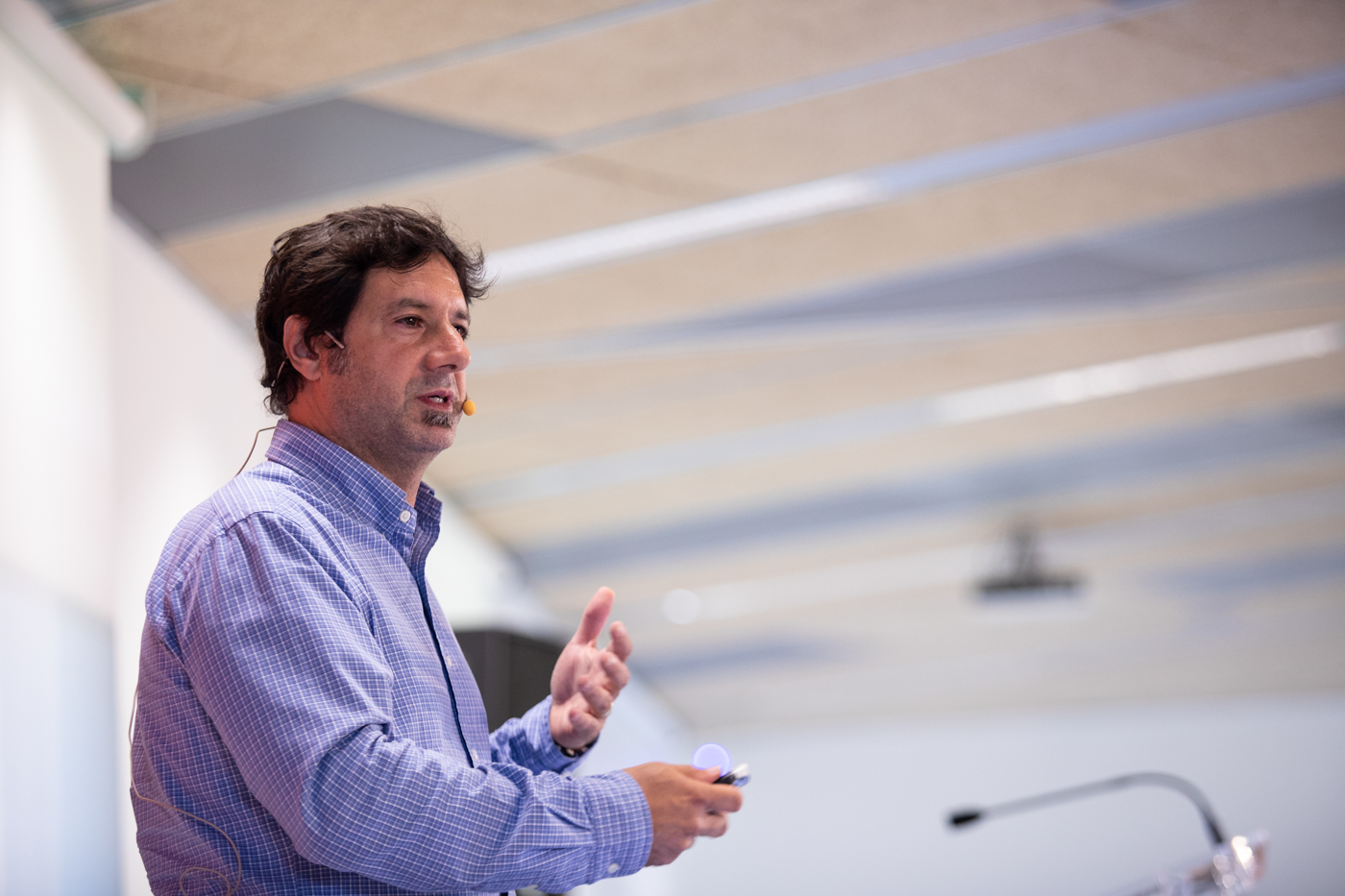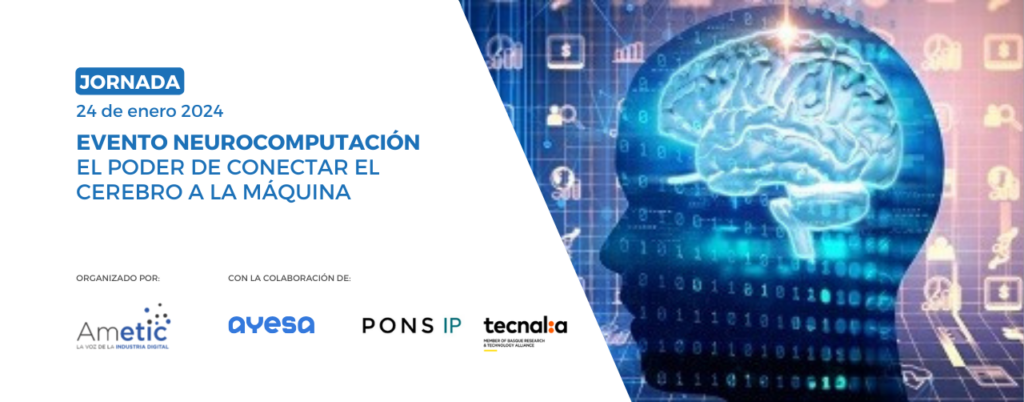January 17, 2024
Connecting brains and machines: Unveiling the potential of neurocomputing
Ayesa too part in the event ‘The Power of Connecting Brains and Machines’, organised by Ametic on 24 January in Madrid.
Computational neuroscience or neurocomputing is an interdisciplinary scientific discipline which brings together several fields such as biophysics, neuroscience and cognitive and computer sciences. Its aim is to gain an understanding into how the brain works and emulate it in new AI models, able to interpret brainwaves generated when carrying out certain activities. By drawing on neural networks and evolutionary algorithms, the ultimate goal is to create brain-machine interfaces.
Aitor Moreno, coordinator of the Neurocomputing Group at Ametic, and head of the Artificial Intelligence and Quantum Computing area at Ayesa, explains how ‘neurocomputing aims to be the new promise when it comes to interacting with systems, directly connecting our thoughts to systems through new human-machine interfaces’. He adds: ‘it is also allowing us to simulate how the brain behaves digitally, simulate human behaviour in virtual environments, and automatically transmit information from the brain to machines’.

Aitor explains that neurocomputing ‘encodes brain signals into codes which now make it possible to control systems, machines, artificial limbs and exoskeletons, and even transfer thoughts and emotions to machines directly’. It is a “disruptive technology on a par with ASR (automatic speech recognition), and is functionally based on the same principles, that is transforming signals into codes’.
The emulation of natural neural networks in hardware and computer systems has given rise to a new set of systems called ‘neuromorphic servers’. These are showing promising results, as shown by deep neural networks in GPU systems, and require far less energy and computational power.
Initiatives such as the EU-led Human Brain Project, the Blue Brain Project and the European Brain Research Area, as well as advances in neuroscience, are helping us better understand the human brain. Aitor remarks how ‘these discoveries are being extrapolated to new and constantly evolving AI models, which in turn are enabling us to simulate more effective virtual patient systems and gain a deeper understanding of brain models’. He goes on to say that ‘neurocomputing, alongside new technologies such as quantum computing, are increasingly allowing us to personalise treatments and in the coming years new computer interfaces will undoubtedly form part of our day-to-day lives’.

Aitor will talk in detail about all these developments at the event ‘The Power of Connecting Brains and Machines’, organised by Ametic and set to take place in Madrid on 24 January. The aim is to allow companies involved in sectors such as industry, healthcare, marketing, engineering and forensics to discover first-hand the advantages currently offered by this technology as well as how it is being used in Spain. Participants will also have the chance to discuss how to best position themselves as global leaders of this new industry, which is already generating significant business opportunities in terms of hardware and software.
Speakers will include experts in artificial intelligence and neuroscience, such as Alex Rayón, Sergio Colado, Sara Sillaurren, Javier Sedano, Joaquín Salinas, Jose Rigol, Alberto Sanz, José Carlos Erdozain, Joseba Laka, Javier Herrera and Antonio Cimorra, among others. In addition, there will be live demos based on EEG and neuromorphic systems to show how the technology works.
We support your projects
We are here for you, to advise you personally and offer you the product you need.